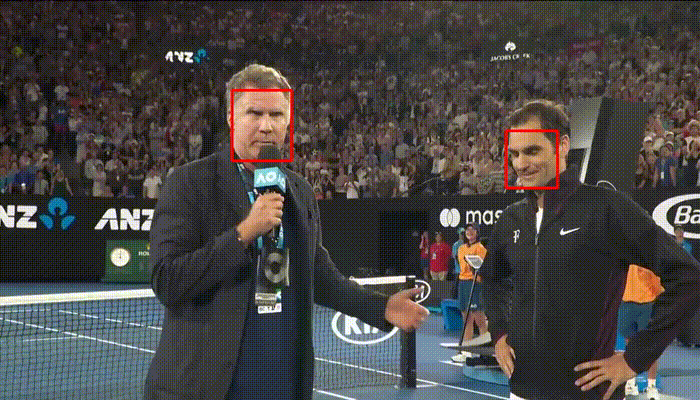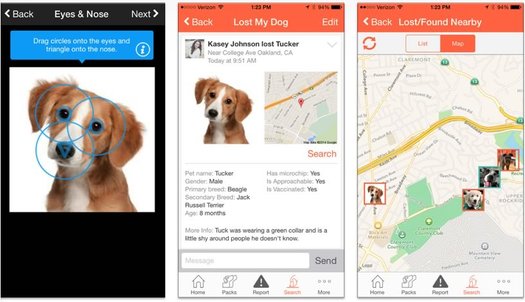Difference between revisions of "Facial Recognition"
| Line 1: | Line 1: | ||
| + | {{#seo: | ||
| + | |title=PRIMO.ai | ||
| + | |titlemode=append | ||
| + | |keywords=artificial, intelligence, machine, learning, models, algorithms, data, singularity, moonshot, Tensorflow, Google, Nvidia, Microsoft, Azure, Amazon, AWS | ||
| + | |description=Helpful resources for your journey with artificial intelligence; videos, articles, techniques, courses, profiles, and tools | ||
| + | }} | ||
[http://www.youtube.com/results?search_query=facial+face+recognition+deep+machine+learning+ML Youtube search...] | [http://www.youtube.com/results?search_query=facial+face+recognition+deep+machine+learning+ML Youtube search...] | ||
[http://www.google.com/search?q=facial+face+recognition+deep+machine+learning+ML ...Google search] | [http://www.google.com/search?q=facial+face+recognition+deep+machine+learning+ML ...Google search] | ||
| Line 93: | Line 99: | ||
* Face Authentication (1:1 Matching+Liveness), on the other hand, takes User-initiated data collected from a device they do control and confirms that User's identity for their own direct benefit, like, for example, secure account access. | * Face Authentication (1:1 Matching+Liveness), on the other hand, takes User-initiated data collected from a device they do control and confirms that User's identity for their own direct benefit, like, for example, secure account access. | ||
| + | |||
| + | = Pets = | ||
| + | * [http://delawarestatenews.net/news/spca-adds-facial-recognition-technology-to-reunite-lost-pets SPCA adds facial recognition technology to reunite lost pets - Delaware State News] | ||
| + | * [http://findingrover.com/ Finding Rover | Finding Rover, Inc.] | ||
| + | |||
| + | http://alloveralbany.com/assets_c/2015/11/finding_rover_app_screenshots-thumb-525x302-21174.jpg | ||
Revision as of 09:42, 25 July 2020
Youtube search... ...Google search
- Screening; Passenger, Luggage, & Cargo
- Face | National Institute of Standards and Technology (NIST)
- Deep Learning For Face Recognition: A Critical Analysis | Andrew Jason Shepley
- Facial Recognition And AI: Latest Developments And Future Directions | Oleksii Kharkovyna - Being Human - Medium
- Rekognition
- Neural Architecture Search for Deep Face Recognition | Ning Zhu
- Deep Face Recognition: A Survey | Mei Wang, Weihong Deng - School of Information and Communication Engineering, Beijing University of Posts and Telecommunications, Beijing, China
- Amazon’s Face Recognition Falsely Matched 28 Members of Congress With Mugshots | Jacob Snow - ACLU
- OpenCV Open Computer Vision
- Interactive map shows where facial recognition surveillance is happening | Fightforthefuture.org
- Facial recognition system | Wikipedia
- ICE Outlines How Investigators Rely on Third-Party Facial Recognition Services | Aaron Boyd - Nextgov
Facial recognition is a biometric software application capable of uniquely identifying or verifying a person by comparing and analyzing patterns based on the person’s facial contours. There are different facial recognition techniques in use, such as the generalized matching face detection method and the adaptive regional blend matching method. Most facial recognition systems function based on the different nodal points on a human face. The values measured against the variable associated with points of a person’s face help in uniquely identifying or verifying the person. With this technique, applications can use data captured from faces and can accurately and quickly identify target individuals. Facial recognition techniques are quickly evolving with new approaches such as 3-D modeling, helping to overcome issues with existing techniques. There are many advantages associated with facial recognition. Compared to other biometric techniques, facial recognition is of a non-contact nature. Face images can be captured from a distance and can be analyzed without ever requiring any interaction with the user/person. As a result, no user can successfully imitate another person. Facial recognition can serve as an excellent security measure for time tracking and attendance. Facial recognition is also cheap technology as there is less processing involved, like in other biometric techniques. Machine Learning on Facial Recognition - Damilola Omoyiwola - Medium
Face detection is one of the important tasks of object detection. Typically detection is the first stage of pattern recognition and identity authentication. In recent years, deep learning-based algorithms in object detection have grown rapidly. These algorithms can be generally divided into two categories, i.e., two-stage detector like Faster R-CNN and one-stage detector like You Only Look Once (YOLO). Although YOLO and its varieties are not so good as two-stage detectors in terms of accuracy, they outperform the counterparts by a large margin in speed. YOLO performs well when facing normal size objects, but is incapable of detecting small objects. The accuracy decreases notably when dealing with objects that have large-scale changing like faces. Aimed to solve the detection problem of varying face scales, we propose a face detector named YOLO-face based on YOLOv3 to improve the performance for face detection. The present approach includes using anchor boxes more appropriate for face detection and a more precise regression loss function. The improved detector significantly increased accuracy while remaining fast detection speed. Experiments on the WIDER FACE and the FDDB datasets show that our improved algorithm outperforms YOLO and its varieties. YOLO-face: a real-time face detector | W. Chen, H. Huang, S. Peng, C. Zhou & C. Zhang - The Visual Computer Deep learning based Face detection using the YOLOv3 algorithm | Ayoosh Kathuria - GitHub ... YOLOv3: An Incremental Improvement | Joseph Redmon, Ali Farhadi - University of Washington
Ethnus Codemithra Masterclass
Face Recognition @ Scale
Youtube search... ...Google search
References:
Scaling Training:
- Federated Learning
- Distributed Learning
Scaling Evaluation:
- Shared nothing architecture
- Neural network/classifier rarely change
- Load balancing pattern
- Partitioning data if needed
- High demands for speed and accuracy:
- identify any one of its 1.3 billion citizens within three seconds
- someone’s face to their ID photo with about 90 per cent accuracy
- accuracy of the photo that most closely matched the face being searched for was below 60 per cent.
- with the top 20 matches the accuracy rate remained below 70 per cent
- when a photo, gender and age range are inputted accuracy level higher than 88 per cent
- launched by the Ministry of Public Security in 2015
- cloud facilities to connect with data storage and processing centres distributed across the country
- portrait information of each Chinese citizen (1.3 billion), amounts to 13 terabytes
- the size of the full database with detailed personal information does not exceed 90 terabytes
- Isvision will use an algorithm developed by Seetatech Technology Co., a start-up established by several researchers from the Institute of Computing Technology at the Chinese Academy of Sciences in Beijing
- University of Electronic Science and Technology of China (UESTC) - Wikipedia
- Journal of Electronic Science and Technology - ScienceDirect
faced is a proof of concept that you don’t always need to rely on general purpose trained models in scenarios were these models are an overkill to your problem and performance issues are involved. Don’t overestimate the power of spending time designing custom neural network architectures that are specific to your problem. These specific networks will be a much better solution than the general ones. faced: CPU Real Time face detection using Deep Learning | Ivan Itzcovich - Towards Data Science
Haar Cascade [left] vs faced [right]


Liveness Detection
Youtube search... ...Google search
an AI computer system’s ability to determine that it is interfacing with a physically present human being and not an inanimate spoof artifact. Liveness Detection has become a necessary component of any authentication system that is based on face biometric technology where a trusted human is not supervising the authentication attempt.
- Facial Recognition is for surveillance; it's the 1-to-N matching of images captured with cameras the user doesn't control, like those in a casino or an airport. And it only provides "possible" matches for the surveilled person from face photos stored in an existing database.
- Face Authentication (1:1 Matching+Liveness), on the other hand, takes User-initiated data collected from a device they do control and confirms that User's identity for their own direct benefit, like, for example, secure account access.
Pets
- SPCA adds facial recognition technology to reunite lost pets - Delaware State News
- Finding Rover | Finding Rover, Inc.
